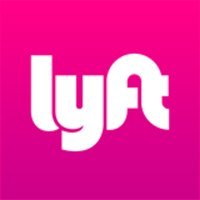
I have been on the road quite a bit this year — New York, Los Angeles, and Las Vegas — but for the first time in years, I haven’t rented a car in any of the cities I’ve visited. Instead, I’ve used the ride-sharing app Lyft.
I’ve not only avoided the cost of the rental car and the hassle of having to remember to refill the gas tank before flying home, but I’ve also avoided the cost of parking. For instance, in LA, I took a Lyft from near Beverly Hills to Santa Monica, where there are very few free spaces on the street, but plenty of places that want to charge you $20/day to park. Or in Las Vegas, all of the casinos where I play poker now charge $18/day to park. I can make the round-trip rides in someone else’s car for less — and that doesn’t even include the cost of parking the rental car at the hotel I’m staying in, which can charge $30/day or more.
I prefer Lyft to Uber because the former treats its drivers better, giving them a higher percentage of the fare, and because the app is easier to use to request a ride, monitor where the drivers are before they pick you up, and then pay quickly on your smartphone. Until recently, Uber wouldn’t let you tip the driver on the app, which undercut the simplicity of completing the transaction — one of the reasons to use these ride-sharing apps is so you don’t have to carry cash.
In all the Lyft rides I’ve taken, I’ve never had a bad experience with a driver. I’ve rated almost all of them five stars (out of five). Oh, sure, there are the drivers who are too talkative, like the woman who went on and on about her kids, her adoption hassles, and her crazy husband. Or the guy who felt it was his responsibility to explain every aspect of road construction we passed, in a non-stop barrage of details about lane-widening, on-ramp moves, and relocated businesses. But most of the time, the drivers just take me where I want to go with a little bit of small talk — and have all had some decent music playing (I’ve never been forced to listen to the local hate-talk radio station, thankfully).
The first few times I used Lyft, I felt a little odd about getting into the backseat of someone’s personal car, so I’d sit next to them in the front passenger seat, like I did when I hitchhiked around my hometown in my teen years (remember when that was a thing?). But then I realized I’d never do that in a regular taxi, and quickly got past the backseat anxiety.
Aside from the lower cost, another reason I prefer Lyft to a cab is that I don’t have to call a company that I don’t know the phone number of to begin with and then wait for their driver to get to wherever I am. For instance, when I wanted to leave Santa Monica and head back to my hotel a half-hour away, there were no taxis driving up and down the street to hail. So I just pulled out my phone and a Lyft driver appeared in 3-5 minutes. And when things are busy at a popular venue — say, in the early evening in Vegas at any of the big hotel/casinos, when everyone’s going out — the line at the cab stand can have dozens of people waiting for 15-20 minutes. At that point, it’s worth it to me to request a Lyft, which will save me time and money, even with the 25-50% surge pricing.
The only ongoing problem I’ve had with Lyft is identifying the car that’s coming to pick me up in states (like Nevada) that don’t have mandatory front license plates. You see, once I’ve requested a ride, the app tells me the driver’s name, the type of vehicle they’re driving, and the plate number. But if I’m in a busy area where lots of other people are waiting for ride-sharing pickups, I can’t tell which car is my designated driver just from looking at it. I can’t discern a Hyundai from a Honda or a Chrysler from a Chevy, so if there’s no front license plate, I stand there like an idiot, reviewing the half-dozen vehicles around me, trying to guess which one’s for me.
But that’s a minor problem. Otherwise, I’ve found the ride-sharing experience to be quite pleasant.
It’s important to note that these services are most useful in densely populated areas. At my home in suburban St. Louis, where I own a car, I can’t imagine why I’d use Lyft or Uber to get someplace. But in Manhattan, or on the Vegas strip, or to get around Los Angeles, I’m happy to let someone else fill up the tank, vacuum the floor mats, and take me where I need to go.
Of course, it may be just a few years before that someone behind the wheel turns out to be no one, once the autonomous car revolution begins. So let me say right now that I will welcome our robot vehicle overlords when they take over. As long as they don’t narrate every construction zone we pass.
